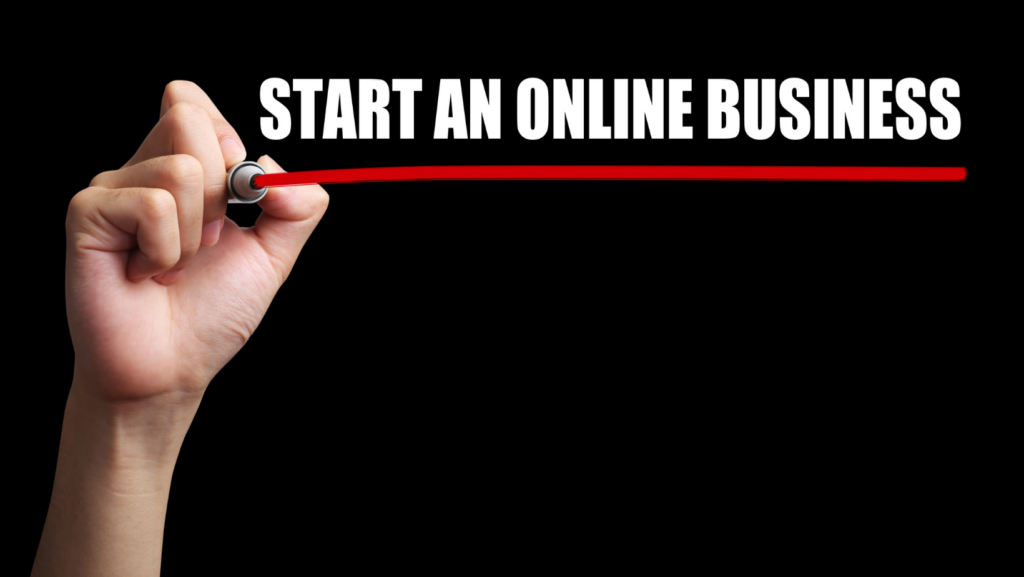In the digital age, how to start a retail business online can be a game-changer. It’s an opportunity to reach a global audience, operate 24/7, and reduce overheads. But where does one start?
This article will guide aspiring entrepreneurs through the process of launching an e-commerce venture. From choosing the right business model to understanding the legalities, it’s a comprehensive roadmap to online retail success.
So, whether you’re a seasoned business owner looking to expand online or a newbie with a dream, this guide will provide valuable insights to help you navigate the e-commerce landscape. The journey to online retail success begins here.
How To Start a Retail Business Online
 Defining online retail and identifying how to start a retail business online assist one in comprehending the reasons for its ascendancy. Get a grasp of the online retail model’s intricacies and figure out exactly why more entrepreneurs than ever before are transitioning into this space.
Defining online retail and identifying how to start a retail business online assist one in comprehending the reasons for its ascendancy. Get a grasp of the online retail model’s intricacies and figure out exactly why more entrepreneurs than ever before are transitioning into this space.
Online retail, commonly known as e-commerce, refers to any commercial transaction conducted on the internet. This mode of trade involves selling products or services to consumers over virtual platforms – websites, social media, and online marketplaces. Amazon and eBay serve as quintessential examples of online retail platforms, offering myriad items to a plethora of consumers all over the world.
Why Choose the Online Retail Model?
Opting for the online retail model offers countless advantages. Primarily, it grants access to a global market. Unlike a traditional storefront confined to its geographical location, an online shop transcends these boundaries. Furthermore, online retail ensures round-the-clock operations, eliminating the constraints of traditional operating hours.
Adopting the online retail model also checks cost-effectiveness. By negating the need for physical space costs such as rent, maintenance, and staffing, overheads reduce considerably. Dismantling these barriers and offering increased convenience, the online model paves the way for entrepreneurs to achieve remarkable success.
Planning Your Online Retail Business
 To set a potential online venture on the path to success, thorough planning becomes a primary necessity. This phase involves a couple of crucial steps that allow better comprehension of dynamics of the intended market and defining the target audience.
To set a potential online venture on the path to success, thorough planning becomes a primary necessity. This phase involves a couple of crucial steps that allow better comprehension of dynamics of the intended market and defining the target audience.
How to start a retail business online starts with detailed market research. This process involves studying the retail industry’s landscape, identifying current trends, and examining the competitive scene. For instance, a budding entrepreneur interested in retailing clothes online might examine market data to comprehend consumer preferences, popular clothing brands, and competitors’ strategies.
Identifying Your Target Audience
Post the market research, definitively identifying the target audience comes as the next significant step. That might involve understanding demographics like age, gender, income level, and lifestyle preferences. Suppose an online retailer aims to sell high-end designer handbags. In that case, the target audience will likely be affluent women within a specific age range who value luxury and fashion. Clear identification of target consumers aids in tailoring marketing strategies, facilitating higher customer engagement and conversion rates.
Managing Your Online Inventory
 A systematic management of online inventory plays a key role in business operations. The following subsections offer insights into choosing products and following inventory management best practices.
A systematic management of online inventory plays a key role in business operations. The following subsections offer insights into choosing products and following inventory management best practices.
Choosing the right product impacts the success of an online retail business considerably. To begin, conduct market scanning to identify gaps in the market. For instance, if there’s a shortage of eco-friendly home decor options, filling that gap can be profitable. Moreover, it’s ideal to choose products with a high profit margin. Make sure these items resonate with the business’s target audience. For example, if the target audience consists of individuals conscious about the environment, then eco-friendly products become a wise choice.
Effective strategies enhance inventory management. Begin by implementing an efficient inventory tracking system. For instance, software programs like QuickBooks or Zoho Inventory offer streamlined tracking solutions.

